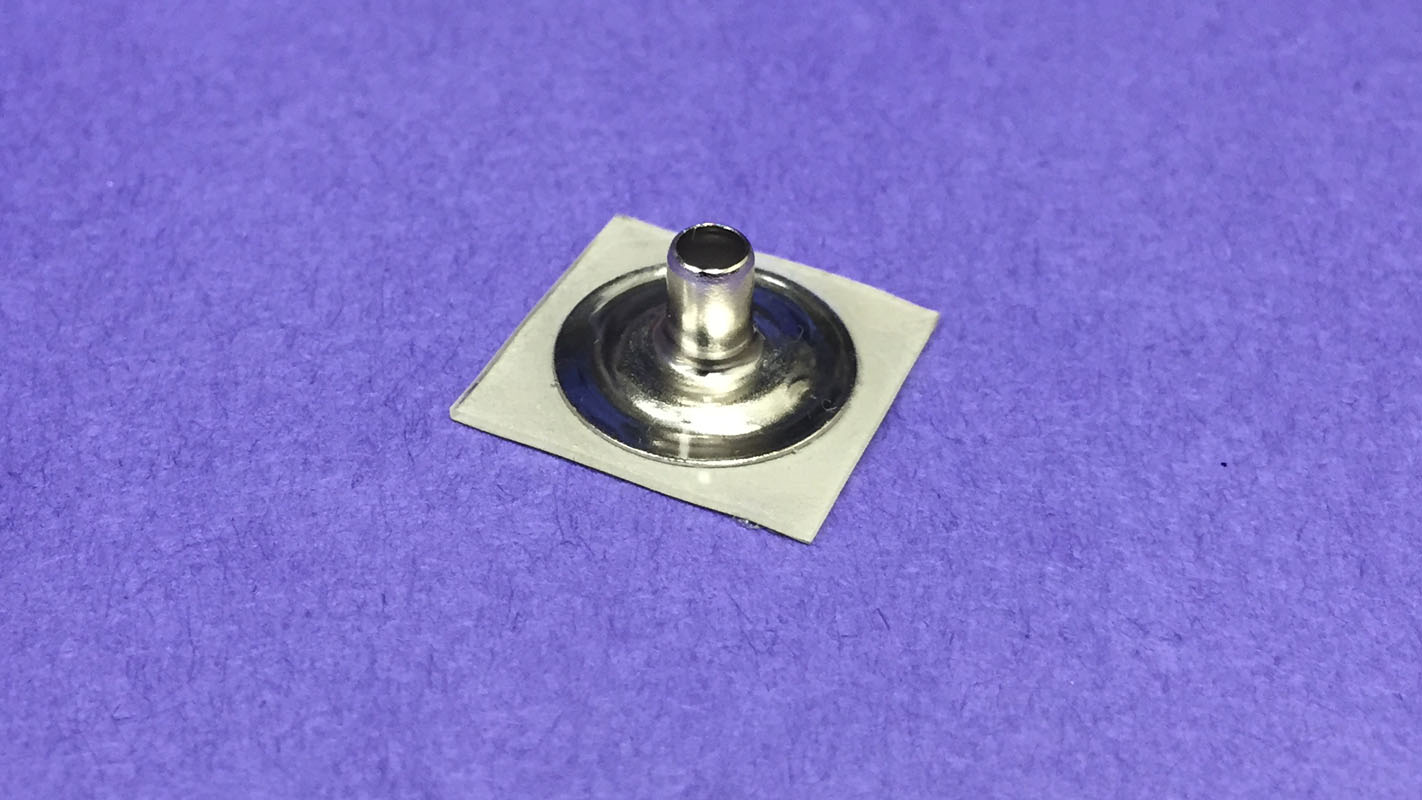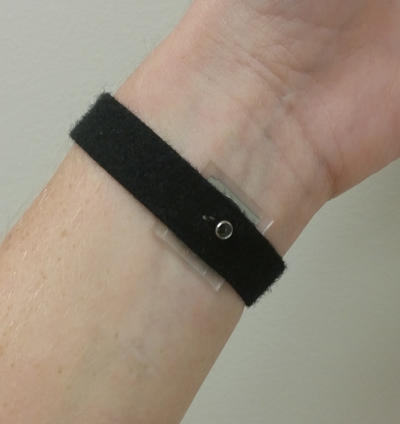Wearable Sensor Smooths Path to Long-Term EKG, EMG Monitoring

For Immediate Release
Researchers from North Carolina State University have developed a new, wearable sensor that uses silver nanowires to monitor electrophysiological signals, such as electrocardiography (EKG) or electromyography (EMG). The new sensor is as accurate as the “wet electrode” sensors used in hospitals, but can be used for long-term monitoring and is more accurate than existing sensors when a patient is moving.
Long-term monitoring of electrophysiological signals can be used to track patient health or assist in medical research, and may also be used in the development of new powered prosthetics that respond to a patient’s muscular signals.

Electrophysiological sensors used in hospitals, such as EKGs, use wet electrodes that rely on an electrolytic gel between the sensor and the patient’s skin to improve the sensor’s ability to pick up the body’s electrical signals. However, this technology poses problems for long-term monitoring, because the gel dries up – irritating the patient’s skin and making the sensor less accurate.
The new nanowire sensor is comparable to the wet sensors in terms of signal quality, but is a “dry” electrode – it doesn’t use a gel layer, so doesn’t pose the same problems that wet sensors do.
“People have developed other dry electrodes in the past few years, and some have demonstrated the potential to rival the wet electrodes, but our new electrode has better signal quality than most – if not all – of the existing dry electrodes. It is more accurate,” says Dr. Yong Zhu, an associate professor of mechanical and aerospace engineering at NC State and senior author of a paper describing the work. “In addition, our electrode is mechanically robust, because the nanowires are inlaid in the polymer.”
The sensors stem from Zhu’s earlier work to create highly conductive and elastic conductors made from silver nanowires, and consist of one layer of nanowires in a stretchable polymer.
The new sensor is also more accurate than existing technologies at monitoring electrophysiological signals when a patient is in motion.
“The silver nanowire sensors conform to a patient’s skin, creating close contact,” Zhu says. “And, because the nanowires are so flexible, the sensor maintains that close contact even when the patient moves. The nanowires are also highly conductive, which is key to the high signal quality.”
The new sensors are also compatible with standard EKG- and EMG-reading devices.
“I think these sensors are essentially ready for use,” Zhu says “The raw materials of the sensor are comparable in cost to existing wet sensors, but we are still exploring ways of improving the manufacturing process to reduce the overall cost.”
An uncorrected proof of the paper, “Wearable Silver Nanowire Dry Electrodes for Electrophysiological Sensing,” was published online Jan. 14 in RSC Advances, immediately after acceptance. Lead author of the paper is Amanda Myers, a Ph.D. student at NC State. The paper was co-authored by Dr. Helen Huang, an associate professor in the joint biomedical engineering program at NC State and the University of North Carolina at Chapel Hill.
The work was supported by the National Science Foundation through the ASSIST Engineering Research Center at NC State, under grant number EEC-1160483.
-shipman-
Note to Editors: The study abstract follows.
“Wearable Silver Nanowire Dry Electrodes for Electrophysiological Sensing”
Authors: Amanda C. Myers and Yong Zhu, North Carolina State University; He Huang, North Carolina State University and University of North Carolina at Chapel Hill
Published: Online Jan. 14, RSC Advances
DOI: 10.1039/C4RA15101A
Abstract: We present wearable dry electrodes made of silver nanowires for electrophysiological sensing such as electrocardiography and electromyography. The dry electrodes perform as well as the Ag/AgCl wet electrodes when the subject is resting and show less motion artifacts, as a result of the intimate, conformal contact with the skin. The nanowire electrodes show no signs of skin irritation, which is desirable for long-term health monitoring.
- Categories:


